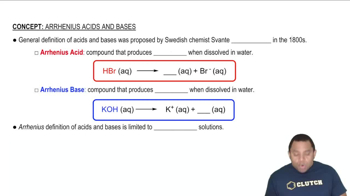Here are the essential concepts you must grasp in order to answer the question correctly.
Oxidation States
Oxidation states, or oxidation numbers, indicate the degree of oxidation of an atom in a compound. They help in understanding electron transfer during chemical reactions. For group 5A elements, such as nitrogen and phosphorus, the oxidation state can vary based on the compound's structure and the other elements present.
Recommended video:
Chemical Formulas
A chemical formula represents the composition of a compound, showing the types and numbers of atoms involved. For example, nitric oxide is represented as NO, indicating one nitrogen atom and one oxygen atom. Understanding how to derive these formulas is essential for identifying compounds and their properties.
Recommended video:
Acids and Bases
Acids and bases are fundamental concepts in chemistry, where acids donate protons (H+) and bases accept them. Nitrous acid (HNO2) and phosphoric acid (H3PO4) are examples of acids that contain group 5A elements. Recognizing the behavior of these compounds in solution is crucial for determining their chemical properties and reactions.
Recommended video:
Arrhenius Acids and Bases
 Verified step by step guidance
Verified step by step guidance

